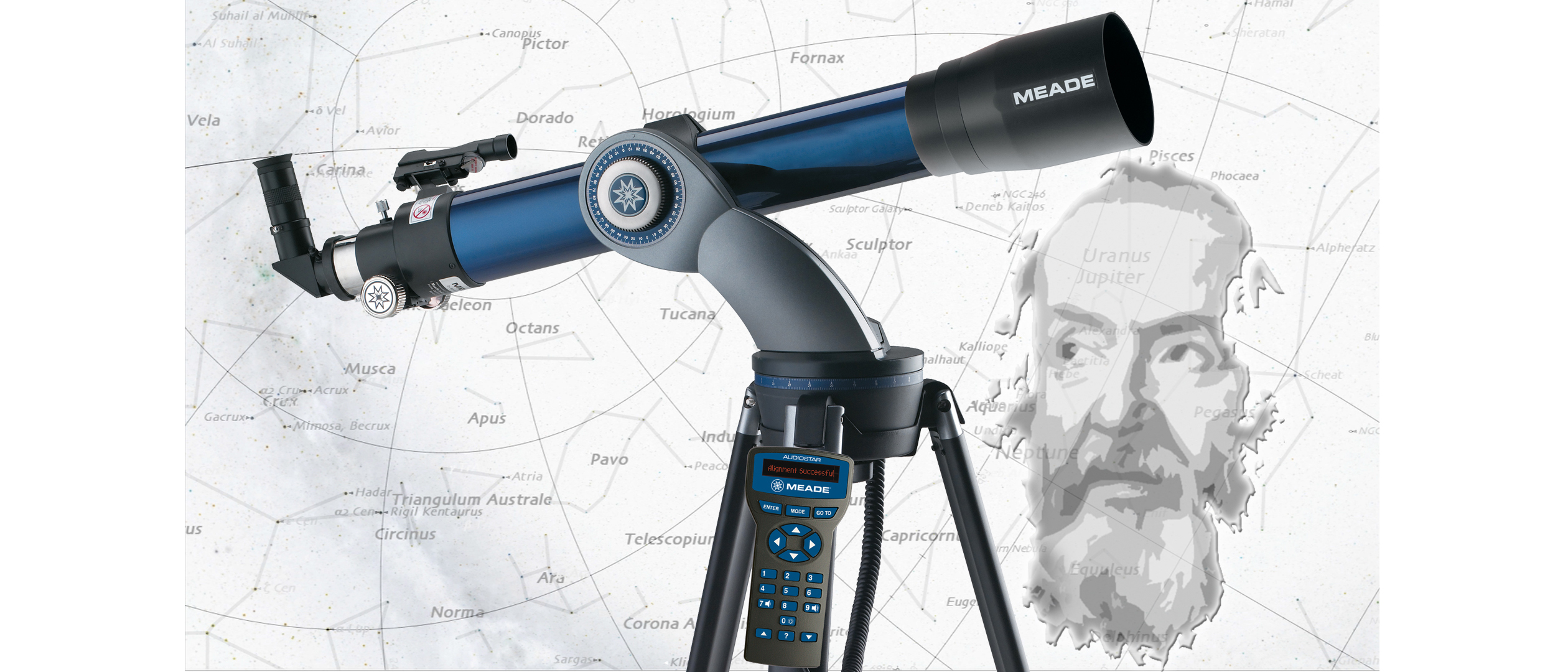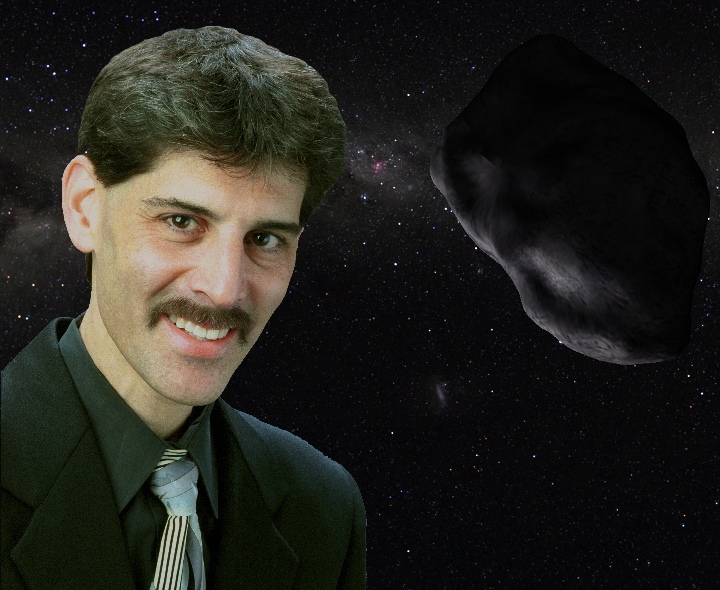Meade StarNavigator 102 Review
Refractor Telescopes: Galileo's Elegant Simplicity

Galileo Galilei didn’t invent the telescope. That honor (or at least the first patent application, in 1608) belongs to Hans Lippershey, a German/Dutch optician.
The stars weren’t on Lippershey’s mind. He was looking for a way to spy on sights across land and sea. Upon hearing of Lippershey’s device in 1609, Galileo promptly made a better one (from an organ pipe and some eyeglass lenses). But Galileo turned his spyglass upward on the night sky.
What he saw blew the doors off human understanding of the Universe. Galileo thought of himself as a philosopher who used math and observation to explore the natural world. You could say he invented science.
Buy a Refractor: Meade StarNavigator 102
Video: Meade StarNavigator 102 Review
Related: Best Telescopes for Beginners (Easy to Use)
Going Beyond Galileo: Meade’s StarNavigator 102
Galileo would have been amazed at today’s refractors. For well under $500, you can see – in just one of two evenings – most of what he saw, but in much better detail and with higher clarity than he saw it.In fact, so good is modern glass, you can see far beyond.
Laboratory-quality optics run deep in the DNA of telescopes by Meade. That’s one reason our reviewers chose the Meade StarNavigator 102 as our leading Refractor for beginners. The "102" number refers to this scope’s 102mm of aperture. That’s about 4 inches of light gathering diameter – very nearly 4x Galileo’s!
Breaking space news, the latest updates on rocket launches, skywatching events and more!
To refract means to break-up – that’s how this scope-type magnifies. But that tends to put colored edges on objects. But the StarNavigator 102 distorts color much less than most others of its size because – true to it heritage -Meade has shaped and coated these lenses to be “achromatic.”
"Go-To" Computer – Finding & Tracking Targets
The StarNavigator will find and track more than 30,000 objects on the night sky using Meade’s "AudioStar with Astronomer" go-to computer platform. You must first perform a short alignment process, which requires you to tell the telescope a few things about where it is and when it is. [Only a few telescopes at this price-point offer completely automatic set-up and we found those to sacrifice optical quality to get you the convenience.]
An internal battery pack ensures you will not have to struggle with cord wrap, no matter how long you track an object. But the 102’s lightweight single fork mount and small stepper motors are not beefy enough to track accurately for astro-photography with a heavy camera mounted out at the end of the relatively long optical tube.
Easy to use
Meade’s StarNavigator 102 is one solid scope. It’s a bit heavy at 25 lbs. but that contributes to its stability as you observe. The sealed optical tube should perform extremely well for many years with very little maintenance.
As a refractor on an altitude/azimuth ("alt/az") mount, it’s intuitive to point and capable to giving a "right-side-up" image. So you can easily use it as a spotting scope for terrestrial observing during the daylight hours. And under the night sky it will pull in the wonders, wonderfully.
Help & Support
Meade caters to an informed user-base. Consequently, their customer support may not be the best at helping with beginner’s issues. But they will make you feel like you’re part of an elite society. And you really will be if you invest in this instrument.
Meade’s website is not as well organized or as informative as some competitors. But Meade’s manuals are easy to find online if you lose yours, or if the paper pages get mushy from spending the night on dewy ground.We could not find any online help-videos about this telescope, which can make a big difference if you are stuck on assembly or alignment procedures.
Meade's warranty is not as long as some others in our lineup, but the quality is so high we don’t expect you’ll need a service contract. Longer customer service hours would be nice, but Meade’s representatives are friendly and helpful when you can get one on the line.
Enjoy!
And when you set up your new refractor for the first time, consider looking at the constellation Scorpius (if it’s then in your sky). Light that left four of the bright stars in that region, at the moment Galileo first looked upon the sky with his spyglass, is just now reaching yours. I’m pretty sure Galileo is jealous!
More beginner telescope types:
- Reflector: Newton Astride A Tripod
- Hybrid: Compact Power & Cool Design
- Dobsonian: A Universe For Every Person
Follow the author @DavidSkyBrody. Follow us on Twitter @Spacedotcom and on Facebook.
Join our Space Forums to keep talking space on the latest missions, night sky and more! And if you have a news tip, correction or comment, let us know at: community@space.com.
Dave Brody has been a writer and Executive Producer at SPACE.com since January 2000. He created and hosted space science video for Starry Night astronomy software, Orion Telescopes and SPACE.com TV. A career space documentarian and journalist, Brody was the Supervising Producer of the long running Inside Space news magazine television program on SYFY. Follow Dave on Twitter @DavidSkyBrody.

